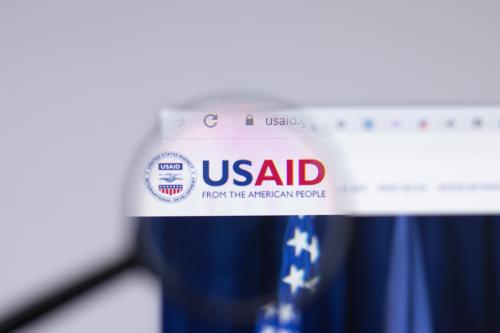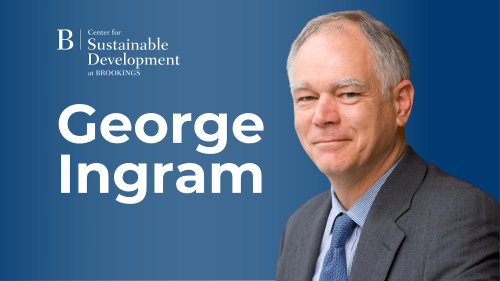This week, twelve trade ministers meet in Hawaii to try to complete negotiations on the Trans-Pacific Partnership (TPP) agreement. If they succeed, there will be substantial benefits for their nations and a big diplomatic win for the Obama administration. If they fail, the accord risks getting bogged down in U.S. presidential politics and puts into question the rebalance to Asia.
The Obama administration’s policy of “rebalance” toward Asia has been designed to achieve two objectives: to embed the United States more deeply in the world’s most dynamic economic region, and to prevent a regional vacuum to be filled predominantly by China as it continues its rise. The rebalance has rested on three pillars: political, security, and economic. The administration has tangible achievements to show in the political and security domains: strengthening of alliances with Japan, South Korea, Australia, and the Philippines; normalization of relations with Myanmar; joining of the East Asia Summit, which the U.S. president attends each year; annual presidential meetings with the leaders of the Association of Southeast Asian Nations (ASEAN) and the opening of an embassy accredited to ASEAN in Jakarta; relaxation of the arms embargo on Vietnam; expansion of counterterrorist cooperation with Indonesia; a Strategic and Economic Dialogue and frequent presidential summits with China; and heightened attention to the South China Sea.
But the economic component that should be driving U.S. engagement has had few specific accomplishments. The Korea-U.S. free trade agreement stands out, but in isolation. The U.S.-China negotiation on a bilateral investment treaty is on a very slow track because of Chinese reluctance to further open up its economy. The Export-Import Bank’s future is tied up in ideological wars in the Republican Congressional Caucus. Reform of the International Monetary Fund has been blocked by the U.S. House of Representatives. Chinese initiatives such as the establishment of an Asian Infrastructure Investment Bank and a “Silk Road” investment project to build infrastructure in Eurasia have been met by sullen resistance and a lack of positive alternatives by the United States. In this context, passage of TPP is vital if the rebalance is to be seen by states in the region as being economically relevant. To impress a region that prizes economic growth and openness, the stakes in TPP therefore are high for the administration.
The benefits of TPP
Currently, there are 12 countries negotiating the TPP. The full details have not yet been agreed on or disclosed. But economists have made plausible estimates of what benefits an agreement would likely yield. In this kind of trade agreement, the big absolute gains go to large economies, especially ones that still have significant protection. Thus, the United States stands to gain $77 billion annually, while Japan’s benefit is an even larger $105 billion. The big winner relative to the size of its economy is Vietnam, which could gain more than 10 percent of gross domestic product; followed closely by Malaysia, gaining about 6 percent. These are static estimates. If joining TPP ushers in additional reforms in Vietnam that attract more investment and productivity growth, the gains could be much larger. Still the overall gains to the TPP-12 are modest and should not be exaggerated.
The long-term effect of TPP will depend on how other countries in the Asia-Pacific region react to it. China is the biggest loser from the current version of TPP. Its estimated losses are similar to Vietnam’s gains, which makes sense because the losses come from trade diversion away from China to Vietnam and other developing countries. China’s economy is many times larger than Vietnam’s, however, so the losses are a tiny 0.2 percent of China’s economy. If more developing countries—especially large ones such as India, Indonesia, and Thailand—are attracted to join, then China’s losses from being left out will mount.
Most of the current TPP countries hope that China is eventually attracted to join. The benefits of any deep liberalization agreement that includes China will be many times greater than agreements without China. China may not want to join a pre-existing agreement, but that is not a big issue if it is serious about liberalizing to the standard of TPP. This could be done, for example, through a free-trade area of the Asia-Pacific whose benefits would be 6 to 7 times greater than those of the initial TPP agreement.
While things look promising for reaching a TPP agreement this week, it is still challenging to get it finalized before the U.S. presidential election takes full flight. Under U.S. trade law and the recently passed Trade Promotion Authority legislation, there is an array of 60- and 90-day clocks during which the president must declare his intention to sign and publish the agreement and the Congress must vote on TPP-enabling legislation. If, as the Obama administration hopes, negotiation among the parties is completed at the round of trade ministerial talks in Hawaii this week, the most optimistic scenario would look like this:
- Notification to Congress in early August of President Obama’s intention to sign TPP, and publication of the TPP agreement in mid-September.
- If both of these events occur in those time frames, the president could sign the agreement at the Asia-Pacific Economic Cooperation (APEC) leaders meeting in Manila on November 18 and 19.
- After President Obama signs, Congress must act through an up or down vote within 90 days, which would mean by mid-February.
Avoid the election
The hope of President Obama and the Republican congressional leadership is to complete the process before the notional February deadline, indeed ideally in December or January. The political imperative is to hold the vote before the February 1 Iowa caucus, so that TPP does not become an issue in the presidential campaign. Free trade agreements are unpopular with voters, especially in the Democratic Party. So passage could become complicated if there are delays. A delayed vote would present a particular dilemma for Hillary Clinton, who advocated and pushed for TPP as Secretary of State but who as a presidential candidate has voiced opposition to passage of Trade Promotion Authority and by implication TPP. She would seem to have a high interest in seeing this issue resolved before the caucus and primary season.
The Brookings Institution is committed to quality, independence, and impact.
We are supported by a diverse array of funders. In line with our values and policies, each Brookings publication represents the sole views of its author(s).




Commentary
Why the TPP is the linchpin of the Asia rebalance
July 28, 2015